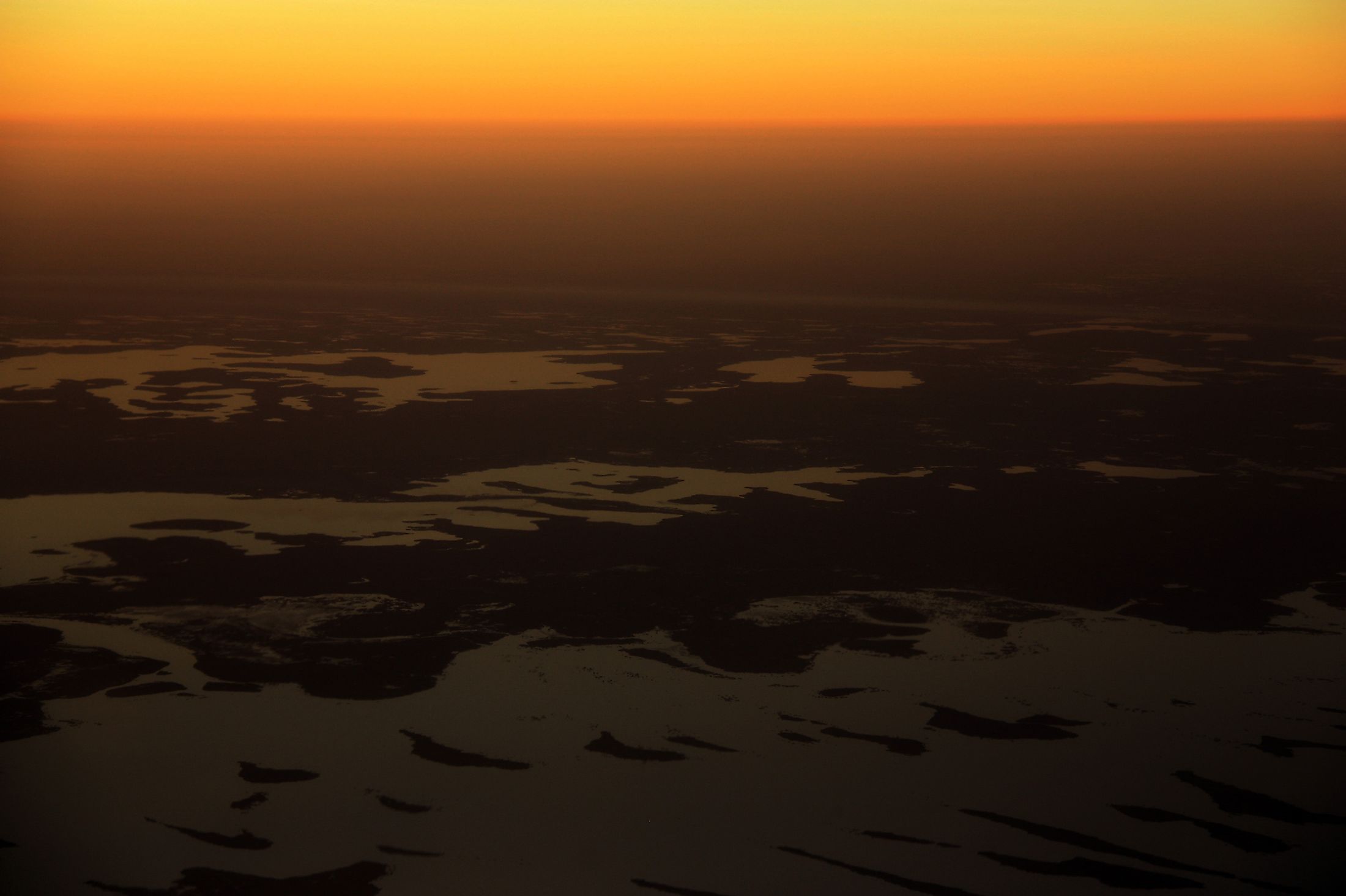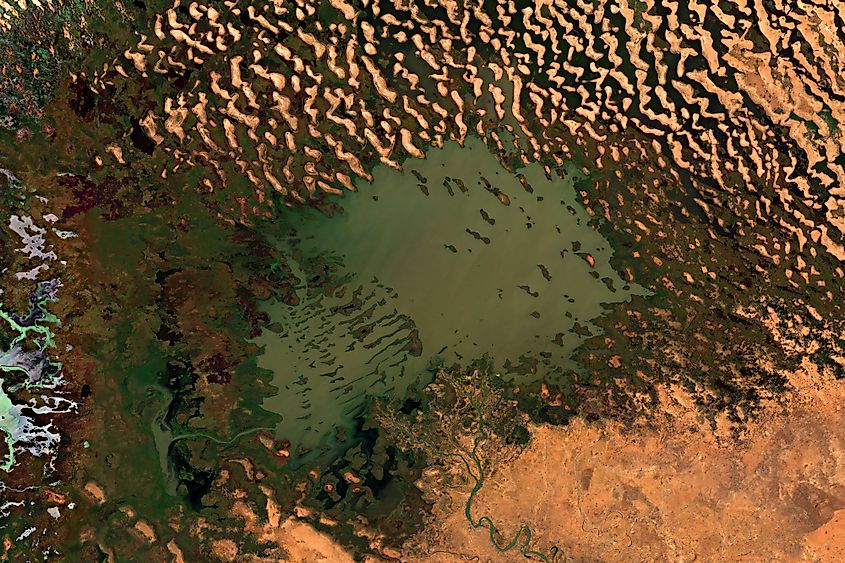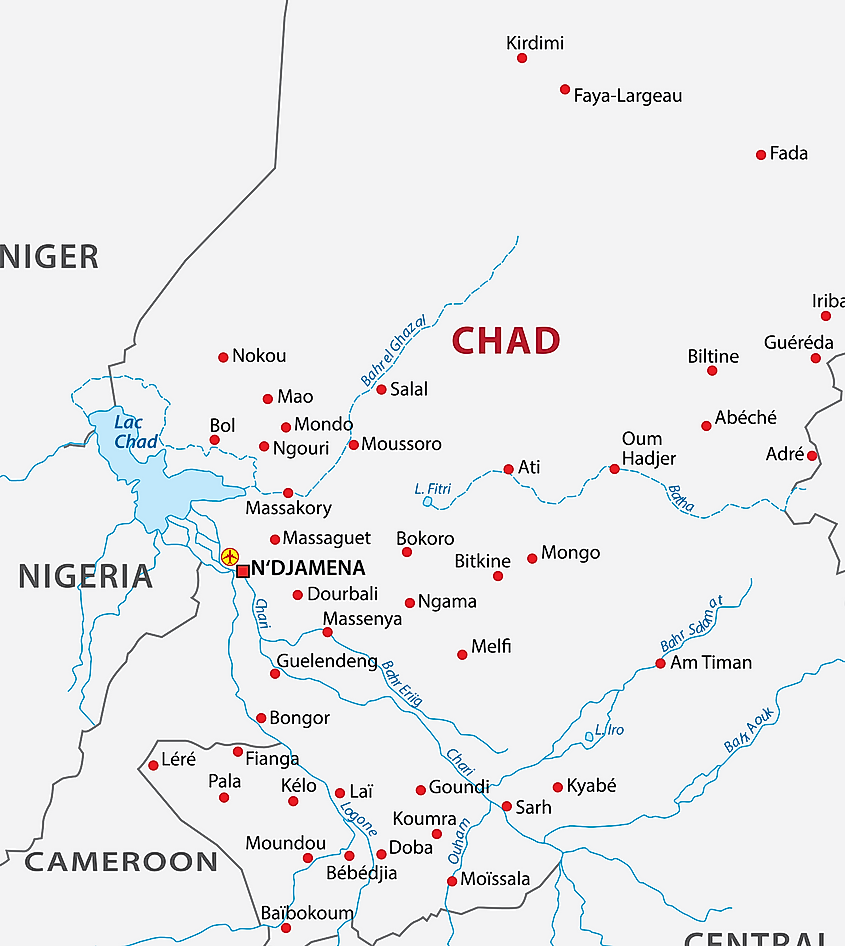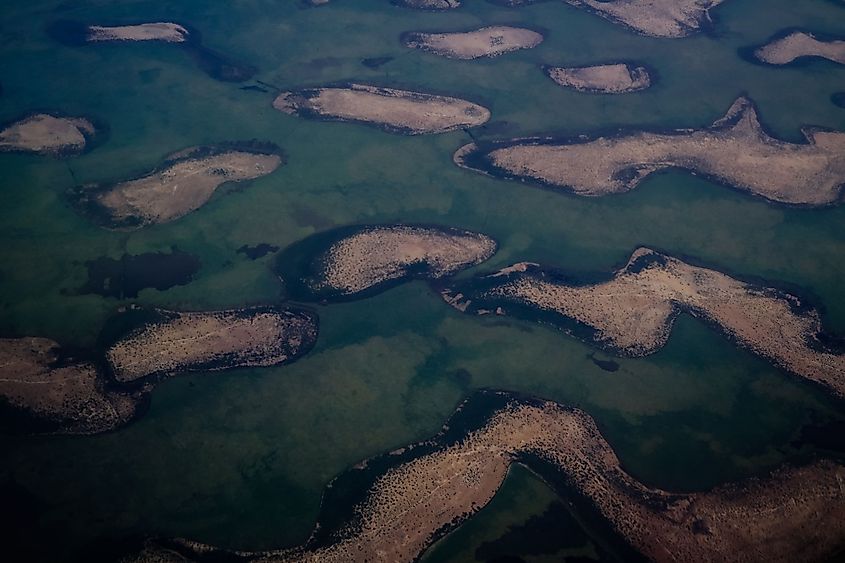
Lake Chad
Lake Chad is a freshwater lake in Northern Central Africa, located in western Chad, with some of its parts extending into Cameroon, Nigeria, and Niger. The lake provides water to over 30 million people living in the surrounding countries, making it one of the region’s most important lakes. However, Chad has lost most of its water in the past half-century, shrinking by about 95% between 1963 and 1998. But, the four governments are trying to find a solution to the drying lake, including a possibility of channeling water from the 2,400-km-long Ubangi River in DR Congo.
Geography

Lake Chad is located within the semiarid Sahel region of West-Central Africa. Lake Chad Basin extends into western Chad, northeastern Nigeria, southeastern Niger, and northern Cameroon, covering 2.4 million square kilometers.
Although Lake Chad’s size varies from year to year and by season, the size has shrunk by over 90% in the last half-century. In 1983, the lake covered 10,000-25,000 square kilometers and contained 72 cubic kilometers of water. However, according to a 2020 report, Lake Chad spans only 1,540 square kilometers and has a volume of 6.3 cubic kilometers and a maximum depth of 11 meters. In 1986, it shrank to 279 square kilometers, the lowest area in its history. Chad has several small islands, mud banks, and reed beds, which take up half of its area.

Lake Chad’s water level is controlled by the rivers flowing into it. The 1,400-km-long Chari River is the main river feeding into the lake. It accounts for up to 90% of Lake Chad’s water and empties into the lake from the south. Komodugu-Yobe River also feeds the lake on the northwestern end. The inflow, lake size, and water level depend on weather patterns linked to the West African Monsoon. The short rainy season in Sahel runs from July to September, while the rest of the months experience intense drought. Besides the dry climate with little precipitation, Lake Chad is very shallow. Thus, its area is sensitive to the slightest change in depth, shown by the fluctuation in size.
Brief History

The name “Chad” has been derived from the word “Sade,” which is the Kanuri word for “large water expanse.” The lake itself is a remnant of Lake Mega-Chad, the largest of the four paleolakes in the Sahara, which covered one million square kilometers. This mega lake was drained by Mayo Kebbi, which connected it to the Atlantic Ocean.
In the 1960s, Lake Chad spanned over 26,000 square kilometers, making it Africa’s 4th largest lake. However, the local population's overdependence on the lake water and the severe drought in the Sahel region have caused it to shrink considerably over the years. In the early 1970s, the lake was in a phase known as "Normal Lake Chad" and was a single large water body with little vegetation around it. By the mid-1970s, it was now a “Small Lake Chad” separated into northern and southern basins, with the Great Barrier dividing the basins. The northern basin dried out and receives water occasionally. By 2000, the lake had shrunk to 1,500 square kilometers. According to the UN, Lake Chad’s shrinkage has been caused by unsustainable usage. However, the latest findings indicate that rainfall patterns have shifted further north due to European air pollution.
Flora and Fauna
As Lake Chad dries up, seasonal or permanent marshes now cover the area that was once covered by the lake waters. The Lake hosts over 44 algae species and is currently the world’s largest producer of wild Spirulina. Wetland grasses on the shores of the lake include jaragua, red rice, black vetiver grass, and barnyard grass.
Close to 179 fish species can be found in Lake Chad, most of which are shared by the Nile, Congo, and Niger River Basins. The lake itself is home to 85 species, including 25 endemic species. The floating lake islands are home to several faunal species, including hippos, crocodiles, and birds. The two endemic birds that are found here include the rusty lark and river prinia.










